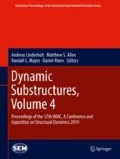Abstract
Risk assessment of structures is an important step to predict damages and losses during natural hazards. The main idea is to fit fragility functions from existing earthquake records. Considerable research has been conducted in this area and various fitting approaches have been suggested. However, existing methods for deriving fragility functions require large training data sets and are designed for a single type of structures each time. This study aims to provide the loss estimation data using supervised learning techniques with a limited amount of observations. Observations are made after the strike of the earthquake based on the responses obtained from randomly selected damaged structures. These observations are used to train the model and prediction of the responses are made for the rest of the structures in the area. A case study is conducted based on the Fukushima 2011 earthquake. It is shown that Gaussian Process Regression (GPR), can provide an integrated model prediction for a group of structures with high accuracy and low uncertainties. This way, not only the predictions are made by a single model for different types of structures, but also the number of observations is very small compared to the existing methods.
Access this chapter
Tax calculation will be finalised at checkout
Purchases are for personal use only
References
Noh, H.Y., Lignos, D.G., Nair, K.K., Kiremidjian, A.S.: Development of fragility functions as a damage classification/prediction method for steel moment-resisting frames using a wavelet-based damage sensitive feature. Earthq. Eng. Struct. Dyn. 41(4), 681–696 (2012)
Kafali, C., Grigoriu, M.: Seismic fragility analysis: application to simple linear and nonlinear systems. Earthq. Eng. Struct. Dyn. 36(13), 1885–1900 (2007)
King, S., Kiremidjian, A., Pachakis, D., Sarabandi, P.: Application of empirical fragility functions from recent earthquakes. In: Proceedings of the 13th World Conference on Earthquake Engineering, Vancouver, BC, Canada. Paper (No. 2829) (2004)
Barbat, A.H., Pujades, L.G., Lantada, N.: Performance of buildings under earthquakes in Barcelona, Spain. Comput. Aided Civ. Inf. Eng. 21(8), 573–593 (2006)
Shibata, A.: Estimation of earthquake damage to urban systems. Struct. Control Health Monit. 13(1), 454–471 (2006)
Molas, G.L., Yamazaki, F.: Neural networks for quick earthquake damage estimation. Earthq. Eng. Struct. Dyn. 24(4), 505–516 (1995)
De Lautour, O.R., Omenzetter, P.: Prediction of seismic-induced structural damage using artificial neural networks. Eng. Struct. 31(2), 600–606 (2009)
Morfidis, K., Kostinakis, K.: Approaches to the rapid seismic damage prediction of r/c buildings using artificial neural networks. Eng. Struct. 165, 120–141 (2018)
Lagaros, N.D., Papadrakakis, M.: Neural network based prediction schemes of the non-linear seismic response of 3D buildings. Adv. Eng. Softw. 44(1), 92–115 (2012)
Seeger, M.: Gaussian processes for machine learning. Int. J. Neural Syst. 14(02), 69–106 (2004)
Ou, G.: Robust hybrid simulation with improved fidelity: theory, methodology, and implementation. Doctoral dissertation, Purdue University, West Lafayette (2016)
Ye, L., Ma, Q., Miao, Z., Guan, H., Zhuge, Y.: Numerical and comparative study of earthquake intensity indices in seismic analysis. Struct. Design Tall Spec. Build. 22(4), 362–381 (2013)
Author information
Authors and Affiliations
Corresponding author
Editor information
Editors and Affiliations
Rights and permissions
Copyright information
© 2020 Society for Experimental Mechanics, Inc.
About this paper
Cite this paper
Sheibani, M., Ou, G., Zhe, S. (2020). Rapid Seismic Risk Assessment of Structures with Gaussian Process Regression. In: Linderholt, A., Allen, M., Mayes, R., Rixen, D. (eds) Dynamic Substructures, Volume 4. Conference Proceedings of the Society for Experimental Mechanics Series. Springer, Cham. https://doi.org/10.1007/978-3-030-12184-6_15
Download citation
DOI: https://doi.org/10.1007/978-3-030-12184-6_15
Published:
Publisher Name: Springer, Cham
Print ISBN: 978-3-030-12183-9
Online ISBN: 978-3-030-12184-6
eBook Packages: EngineeringEngineering (R0)

